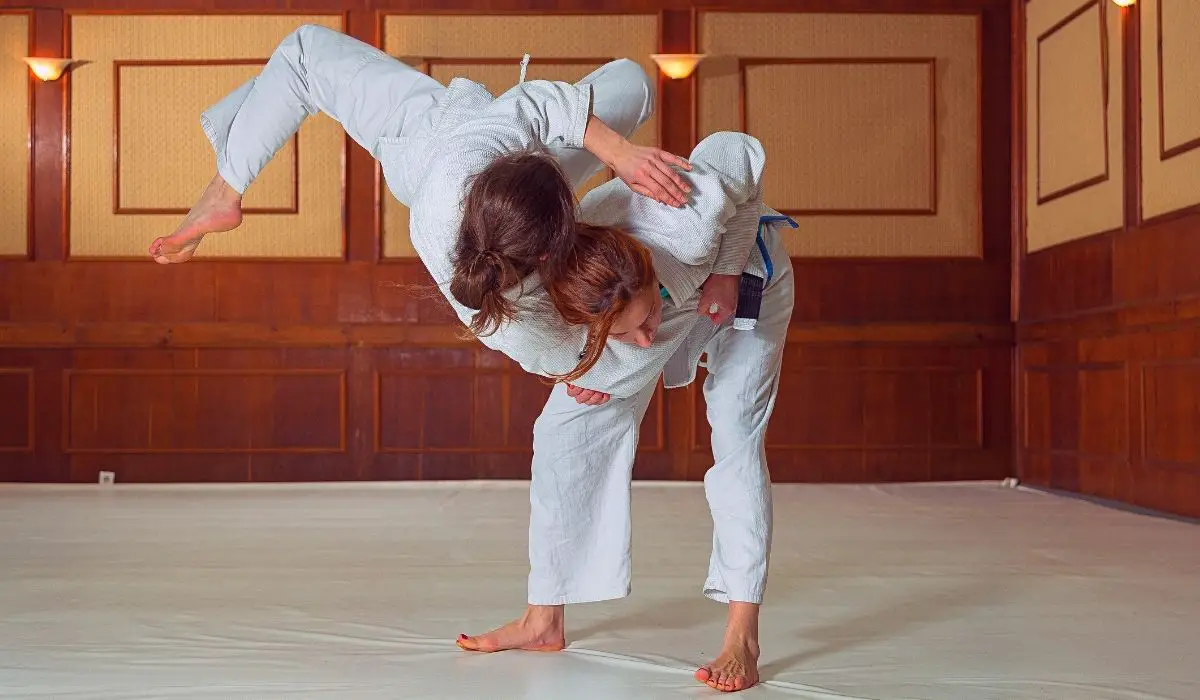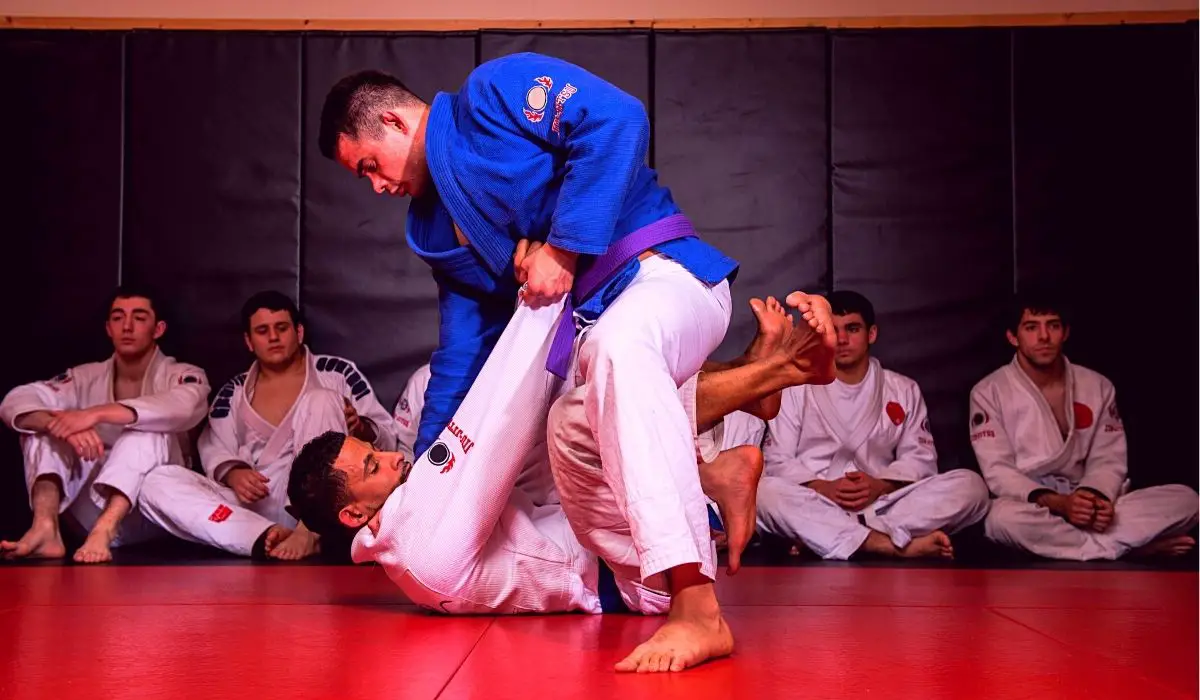If you’re interested in learning Jiu-Jitsu but need help figuring out where to start, this guide is for you. It will provide tips and advice to help you begin your training journey.
Jiu-jitsu is a grappling martial art incorporating various styles, including judo and wrestling. Learning Jiu-jitsu can be a great choice, but it’s only the first step in your journey.
How to Start Jiu-Jitsu Properly?

Beginning Brazilian jiu-jitsu training can be a significant life decision as it’s a fantastic combat sport that teaches various skills and techniques.
However, there are a few things that you should keep in mind before starting your BJJ journey to ensure you stay in the sport for several years and enjoy it to the fullest.
Here is what you should know before starting jiu-jitsu:
Understanding the Basics of Jiu-Jitsu
Jiu-jitsu is a martial art that originated in Japan. It focuses on grappling and ground fighting techniques.
It leverages joint locks, chokeholds, and positional dominance to overcome opponents.
Finding the Right Jiu-Jitsu School
To start your Jiu-Jitsu journey, find a reputable school that prioritizes safety and offers beginner-friendly classes.
Look for factors such as the instructor’s credentials, class schedules, facility cleanliness, and overall atmosphere.
Beginner’s Classes
To start with Jiu-Jitsu, choose a school and attend the beginner’s class. Instructors will guide you through the fundamentals in a supportive environment, so don’t worry about being a beginner.
Essential Gear for Jiu-Jitsu
Ensure you have the right gear before training. For no-gi training, you’ll need a Jiu-Jitsu gi, a mouthguard, and grappling shorts or spats (optional).
Learning the Basics: Positions and Techniques
During your early training sessions, focus on mastering the fundamental positions and techniques of Jiu-Jitsu. These include:
- Guard: This is a position in which you are on your back and using your legs to control and defend against your opponent.
- Mount: Achieving a dominant position by straddling your opponent’s torso while maintaining control over their upper body.
- Side Control: Establishing control over your opponent from the side, allowing for effective submissions and transitions.
- Escapes: Techniques to free yourself from unfavorable positions, such as the mount or back control.
- Submissions: Joint locks and chokeholds force your opponent to submit.
Consistency and Patience: Keys to Progress
Like any martial art, progress in Jiu-Jitsu requires dedication, consistency, and patience. Understand that improvement takes time and that setbacks are a natural learning process.
Stay committed to regular training, actively seek feedback from instructors and peers, and focus on gradual improvement rather than immediate results.
Sparring and Rolling: Putting Techniques into Practice
As you gain confidence and proficiency in the basics, you can participate in sparring sessions, also known as rolling.
Sparring allows you to test your skills in a live, controlled environment against resisting opponents.
Approach sparring with an open mind, focus on applying techniques learned in class, and don’t be discouraged by losses; each sparring session is an opportunity to learn and grow.
Balancing Training and Recovery
While enthusiasm for training is commendable, it’s essential to prioritize rest and recovery to prevent burnout and injuries.
Listen to your body and incorporate rest days into your training schedule for proper recovery.
Additionally, prioritize adequate nutrition, hydration, and sleep to support your body’s physical demands and promote optimal mat performance.
Setting Goals and Tracking Progress
Set specific, achievable goals and track your progress over time to stay motivated and focused on your Jiu-Jitsu journey.
Whether earning your next belt rank, mastering a particular technique, or competing in tournaments, having clear objectives can provide direction and purpose to your training.
Celebrate milestones along the way and use setbacks as opportunities for growth and learning.
Can You Start Jiu-Jitsu at Any Age?

It’s possible to start training in Brazilian Jiu-jitsu at any age. Learning BJJ can significantly impact your life, no matter when you begin.
If you have high goals in life, starting BJJ at any age (18, 30, 40, or 50) can be one of your most important decisions.
For instance, the famous TV actor Ed O’Neill started training in BJJ when he was around 42 years old. In just a few years, he earned his black belt.
Similarly, Anthony Bourdain, a well-known TV host and author, began learning BJJ at 58 and obtained his Blue Belt.
What an Excellent Jiu-Jitsu Gym Looks Like?

Certain features distinguish an excellent Brazilian jiu-jitsu gym. These characteristics include:
- A significant number of BJJ students of regular size wear brightly colored belts.
- The instructor is friendly and supportive, helping students to reach their goals.
- There is no evidence of religious practices in this academy.
- The gym is conveniently located, and the schedule is suitable.
- The gym is designed to cater to your needs, whether self-defense or competition training.
How Often Should You Train BJJ?

To develop your jiu-jitsu skills, aim to train at least three times a week. Alternating practice days with days off is okay for beginners.
Commit to four or more weekly sessions for quicker progress. Training only a few times a month will hinder your advancement and prevent you from grasping fundamental skills.
Avoid overtraining to prevent injury and burnout.
Conclusion
Brazilian Jiu-Jitsu is a grappling martial art where two practitioners takedown and submit each other.
Embarking on your Jiu-Jitsu journey is an exciting and rewarding endeavor that offers physical fitness, mental resilience, and a sense of community.
To succeed in Jiu-Jitsu, find the right school, commit to consistent training, and embrace the learning process.
Remember, the key is perseverance, patience, and a willingness to embrace challenges as opportunities for growth.


